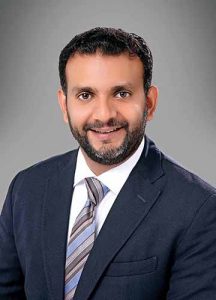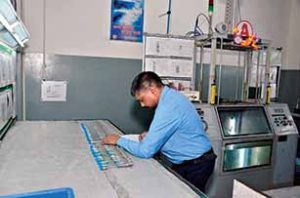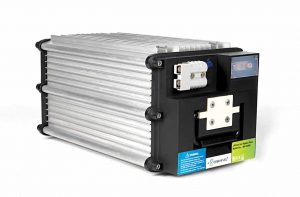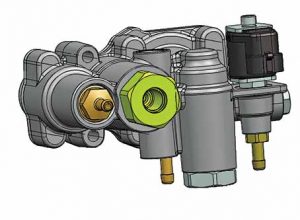Story by: Gunjan Bidani and Deepti Thore
Recognised by Tata Motors as the Supplier of the Year 2019 for 100 per cent delivery by the spare parts division for TOC performance, Greenfuel Energy is looking at a considerable uptake in business as the preference for CNG and electro-mobility rises. Recording its highest turnover this fiscal at Rs.85 crores, the company is upskilling in key areas like mechanical, mechatronics and electronics to gain an edge. With core competence in supplying systems that are tailor-made for OE applications, Greenfuel Energy is working on complex components that are about high pressure, low pressure, and electronics. Taking pride in the successful integration of various parts that make a CNG system, the company is highlighting its ability to combine different competencies and technology to ensure utmost performance and reliability. Having a technology licensing arrangement with WEH GmbH for certain parts, it is leveraging the know-how it has gained in the Indian market since 2006. Meeting the expectations of its OE client as well as the end-users, Greenfuel Energy is seeking high growth in the area of CNG and electro-mobility.
Entering the field of CNG systems by bagging an order to do the Tata Marcopolo CNG city-buses in Delhi, Greenfuel Energy, according to its founder and managing director Akshay Kashyap, is eyeing fast growing CNG three-wheeler segment. Stressing on the billions of kilometers the Tata Marcopolo buses have covered with their systems onboard, he expressed confidence in finding success in the new area of business. To the three-wheeler CNG segment, the company is offering an innovative EFI system it has developed. Claiming that it has been patented worldwide, Kashyap informed that application work on the innovative EFI system is currently on. Soon expected to come up for commercial application, the innovative EFI system has the potential to alter the dynamics of the entire segment, according to Kashyap. Concentrating solely on OE business since they found the practices in the aftermarket unfair, Greenfuel Energy is committed to supplying CNG systems that are safe, reliable and of high value. Looking at re-entering the aftermarket, but staying away from the price-sensitive end that involves players which do not mind compromising on certain elements, the company is looking at introducing an electronic product whose serial number will have to match to be registered.
Self-reliance in technology
Happy to be in the OE space as it is about attention to safety, reliability and performance rather than cost, Greenfuel Energy is putting a lot of emphasis on self-reliance. As the largest CNG supplier in India, stress on self-reliance will enable it to develop its technology and cater to different application areas better is what it feels. Catering to the needs of CV manufacturers like Maruti Suzuki, Tata Motors, Ashok Leyland, Volvo Eicher, and SML Isuzu, the company is stepping into the manufacture of engine-side CNG components. It were the lack of volumes that kept from indulging in this activity until now. Aware that the stress on quality is growing, Greenfuel Energy is seeking the help of some experts to commercially produce certain components and to export them as well. Building an assembly line, which is expected to be operational by March 2020, the company is doing prototypes. In fact, some prototypes that have been produced are already being tried out. Pursuing a zero-defect quality strategy, it is also extending its attention to e-mobility. Investing in R&D over the last two years, Greenfuel Energy has filled patents for battery design. It is currently validating the same by subjecting it to extensive trials under different temperature conditions and different vehicle types. This includes vibration tests among others.
Studying the export markets that it plans to enter, Greenfuel Energy is looking at offering CNG systems that are cost-effective and reliable. The quality of the systems will draw customers compared to the Chinese ones, which are cost-effective but not as reliable, announced Kashyap. Of the opinion that Italians have good exposure in CNG systems, he explained, “It is to attain high standards that we are working towards developing out own technology.” “That is what will matter the most hereafter,” he added. Keen to leverage the knowledge gained from working in a tough market like India, and use it to build systems for the export markets, Greenfuel Energy is looking at stricter regulations altering the demand for systems that are electronic in nature, and components that are of even higher quality. Innovating in key component areas like regulator, according to Kashyap, Greenfuel Energy is upskilling in areas like mechatronics as well. Looking at working with three wheeler OEs to help them meet BSVI emission norms, the company has come out with a system that combines seven components into one.
Opportunities in the CNG space
Highly compact and light in weight, the system that combines seven components into one is termed as the regulator injector filter. It is of the size of a palm, patented and quite cost-effective, according to Kashyap. Banking on the expansion of CNG infrastructure by 2025 to over 5500 filling stations, Greenfuel Energy is confident of new opportunities emerging in the CNG space. “Demand will not be limited to few segments, but will be spread to almost every vehicle segment,” Kashyap averred. He drew attention to the good uptake in the share of business coming from the CV industry. Anticipating the use of gas propelled CVs to rise to 15 per cent from 2021, Kasyhap stated, “There will be a three-fold increase in the use of gas-powered CVs.” Opining that gas-propelled passenger vehicles will also increase in the wake of the CAFE norms, he mentioned that they are expecting many startups to arrive on the scene as segments like two-wheelers under 150 cc turn electric progressively. According to Kashyap, “Startups, benefiting from less baggage, will prove to be disruptive.” Expecting the quality of electric two-wheelers to improve a good deal, Greenfuel Energy is not very happy with the current scenario where motors that are ideally suitable for mixer-grinders used in kitchens, are used to propel three-wheelers.
Anticipating a good deal of standardisation to take place in e-mobility, Greenfuel Energy is looking at the components industry profiting from quicker adoption of technology. Providing an example of how old television technology has given way to new television technology, and how the market has embraced it, Kashyap explained, “Cost advantage will come out with volumes.” Terming Chinese cell suppliers as mere packers, Kashyap mentioned that the key task of producing a battery pack has been mastered by them. Greenfuel Energy has made their own battery pack, he announced. Stating that the company has made a unique modular system, Kashyap explained that it has a unique heat removal system. It is made from using a mechanical packaging aluminium with fins on it for air cooling, he added. Looking at OEMs to pay well, Kashyap is keen that the supply chain moves up the value scale. Calling for higher stress on quality, he commented that OEMs like Maruti Suzuki specify international standards when one exists. “About 60 per cent of our business currently comes from the passenger vehicle segments and 30 per cent from CVs,” revealed Kashyap.
Earning better revenue from CV segments, Greenfuel Energy has come out with an interesting product called ‘manifold’, which re-arranges the entire filling system into a single unit that is cost-effective and worthy of ‘plug and play’. Revealing that the ‘manifold’ got them nominated by Volvo Eicher for the innovative supplier contest, Kashyap said that BSVI emission regulations will lead to a rise in preference for gas propulsion. Witnessing a drop in capacity utilisation up to 55 per cent due to the current slowdown, the company is expecting to bag a big order in the commercial three-wheeler space soon. Building a battery assembly line at Manesar in the NCR region, it is looking at a considerable play in the electric vehicle domain. Claiming to have spent seven-crore rupees in R&D alone, Kashyap mentioned that they are looking at building technologies that they can take to other parts of the world rather than apply only in the domestic market of India. Hiring Swedish experts for battery pack development, the company is banking on technology and knowledge. It is expanding its electric division by investing in manpower and equipment.


























